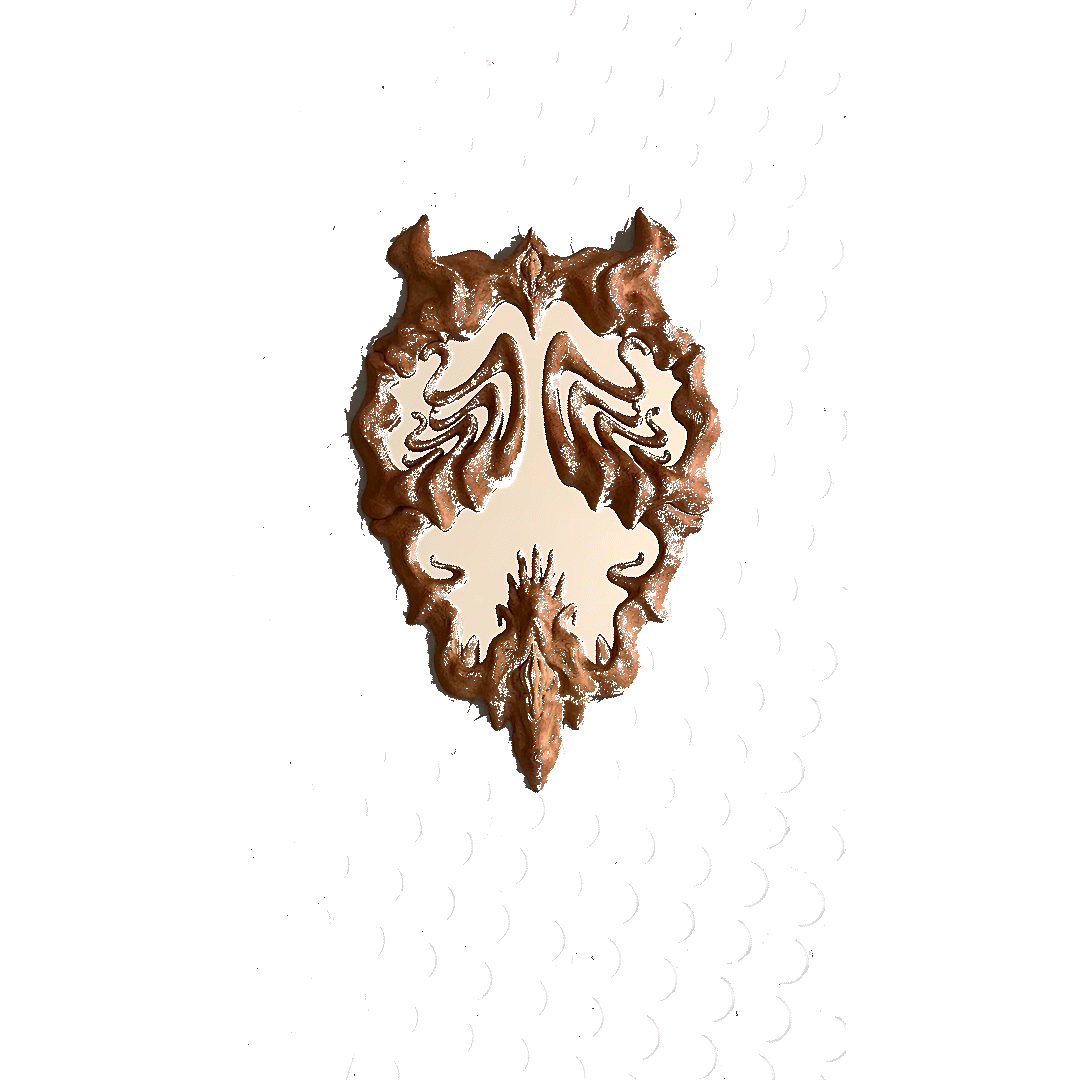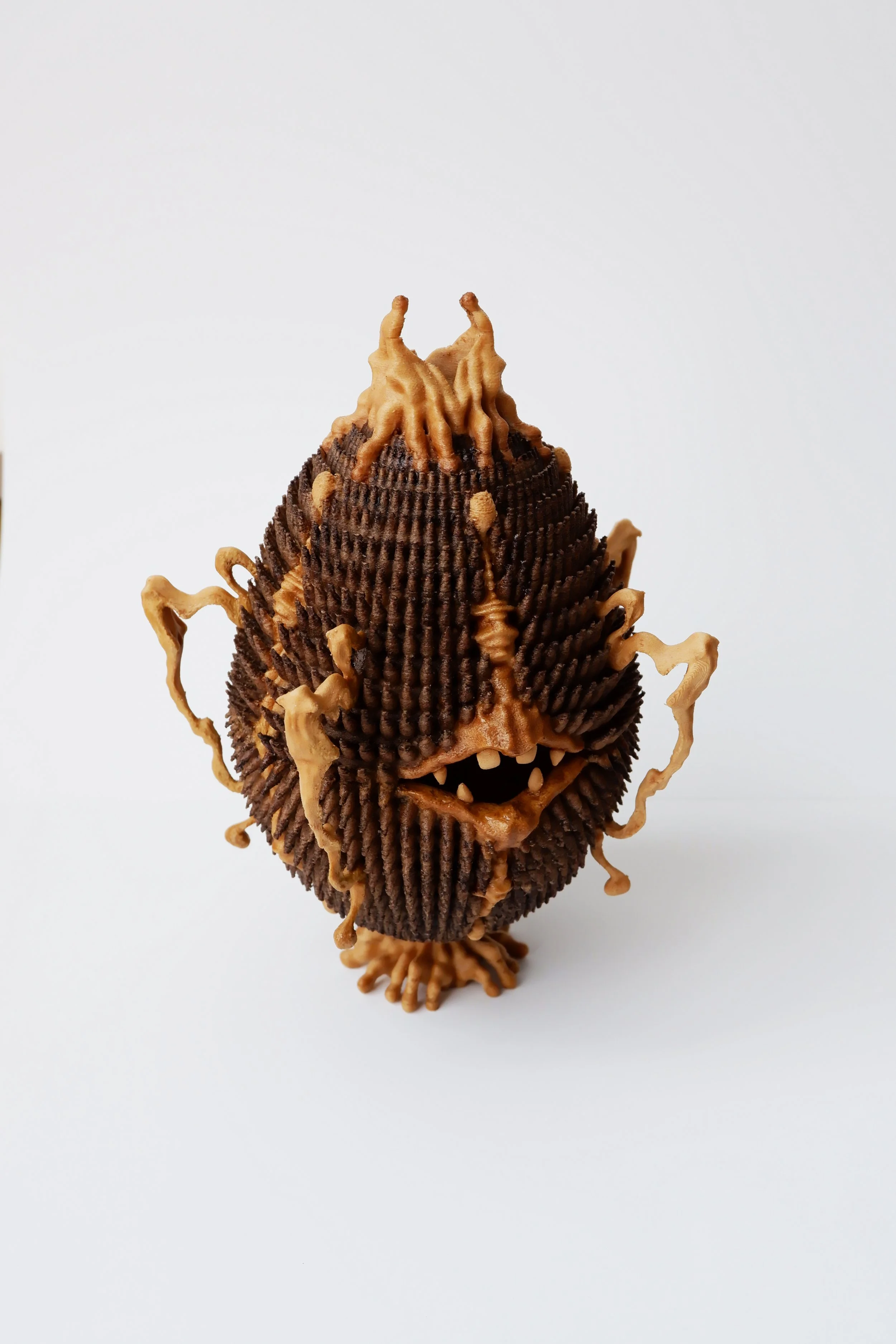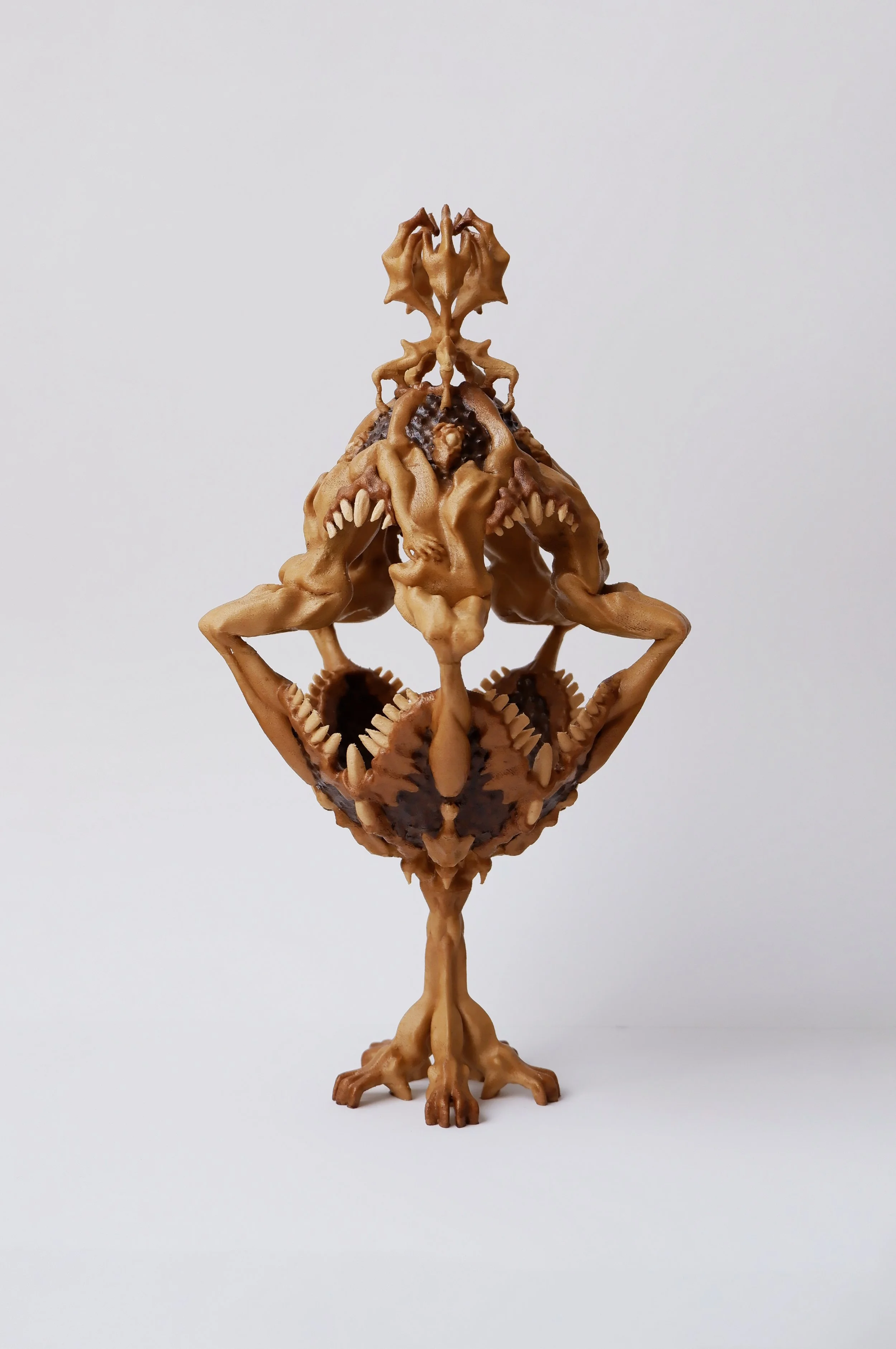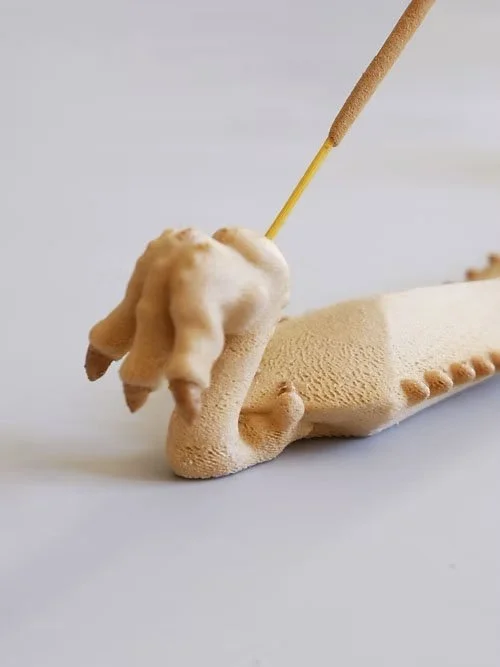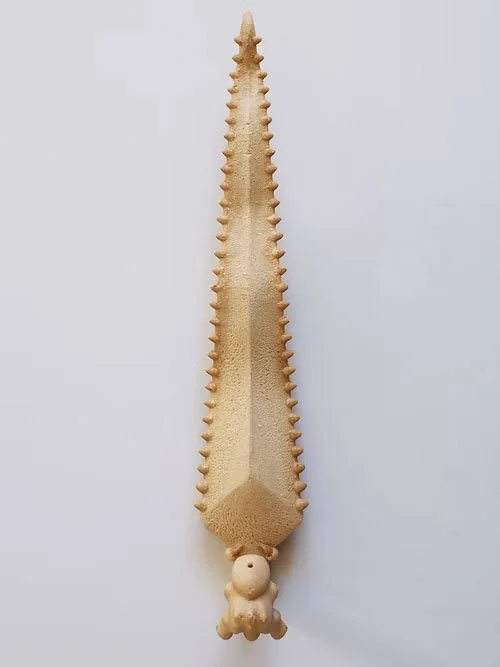Maïté Seimetz shapes encounters that are felt as much as they are seen.
Juan Cantu: You said that you always wanted (your work) to be physical.
Maite Seimetz: I think there's something about the connections we can create with objects, which is often missing when there's a type of solitude–when you're not with other people but you might not be on your own necessarily. So I’m quite interested in how we can craft affective relationships between things in general, not just between humans. To have a bit more, I don’t know how to describe it, but just more care for the things around us. I recently had really interesting conversations about the fast consumption of objects around us, fast fashion, and super commodification. And because everything is so readily available, it just passes through and there is no real interest in having a more meaningful connection with even just the objects that we use on a daily basis.
There’s also something quite magical about how people used to have less objects and they would be more attached to them and pass them and its long lasting affections down through generations. And that becomes magical because many people have had it and everyone had their own relationship to it. So it becomes more antique in a way and is no longer something that you just throw away and becomes instant.
JC: That’s really interesting! Through aesthetics, you are tapping into the temporal dimension of objects. You particularly mentioned texture, touch, and how it exists in space.
MS: I think that all three of them are quite important. I started off in a purely digital space, and I always felt like there was something missing. It's not just about having visual shadows, although light is obviously something very important once it’s (the work) out of the computer. But I quite enjoy having things that can be touched or that can be looked around. You sort of process it and it becomes part of real life, instead of staying two-dimensional–which is why I don't think I like drawing as much anymore. It's important to go and live it. Recently I've been making more experimental furniture and collectible pieces, because I really like people interacting with them. I quite like people to be able to touch it and feel the shapes. It sort of gives it a soul once you interact with it physically.
I’m quite interested in how we can craft affective relationships between things in general, not just between humans.
I'm trying to use 3D printing to make things that have a sensorial experience.
JC: what about texture?
MS: Well, for 3D printing, I don't like plastic. I work a lot with wood filament, which has actual wood powder inside of it. When you touch a piece of wood from a piece of furniture, it really does something. You can feel the elements in it. I'm trying to use 3D printing to make things that have a sensorial experience. For example, I've been (3D)printing objects much heavier than they would need to be if they were just for being looked at, so you can actually feel the weight in your hand and feel the texture on your skin, it becomes part of the experience.
JC: You basically hacked the print. When you 3D print something, you usually optimize it so it becomes lighter and cheaper to print, but you are doing quite the opposite.
MS: Exactly. For example, I've got this incense holder, which is one of the early pieces I made, and it's super light, it weighs like 15 grams. And I love the shape of it, but when it came out, I wanted it to weigh a bit more in my hands. I didn’t have to make it heavier, but it's about the interaction with the person who's going to hold it and the feeling it gives you when you lift it up. Inversely, you could make giant sculptures that are really light and look like they're floating. It's an additional element that you can control in the production. It’s like designing the inside of it.
JC: I wouldn’t want to insist on architecture, but it seems like that is something that art doesn’t always have. In your case, maybe the expressive part of your aesthetic came from your own intuition and your own interests, but like you mentioned, the rigor, you acquired it from architecture. Being able to look at it in section, is very architectural.
MS: Well, it's also less about just making something that you then look at in a gallery from a distance and not being afraid to have an iterative process with the pieces until they feel right in your hand or sort of have the right way to come together. There are people that do that in art, but it is quite an architectural or design approach.
JC: And what have you learned beyond Architecture?
MS: I think the scale of things. I started actually producing physical things, but in architecture school, it's all theoretical isn’t it? You can’t build the building to see what it's going to do unless you do pavilions and even with a scale model it's not really the same as living it. So the first sculptures that I made were super super detailed and I would get a bit lost in digital space. And then when I printed them they were kind of small and very intricate and beautiful objects but didn't have the impact that I thought it would have. It felt very different once it was produced. Also, because when you're in the computer, you are sort of really inside it and you're up close to a detail that Is going to be two millimetres large once it's printed. And I think it's just realizing that actually when it's made, maybe something it's better being ten centimeters large rather than ten millimeters. Because when I actually make something a bit bigger, it feels more like I'm inside it, the same way that I would 3D model it because I can zoom into the infinite on a computer, which I can't do in reality. So the actual fabrication of things, sort of makes you reassess what the right scale is to communicate the emotion that I would like or to have an interactive element.
So that's something that came just from the making. I think just in general, when you have a practice the more you produce things and the more you actually prototype and make, the more you get a sense of what works well. And so I spend a lot less time on tiny, tiny details now. And I think there’s already been a bit of an evolution of the aesthetic of it, perhaps because I don't actually need all of this mini, mini details because it doesn't communicate in real life so it just doesn't need to be there.
JC: That is also a lesson on the differences between the digital and the physical.
Yeah. So I think if I was making purely digital works, it might have more of the supercharged esthetic, where there’s tons of tiny details everywhere, because you can go in and go look at them and you have this virtual magnifying glass that you don't necessarily have in real life when you're interacting with an object.
I mean, you could put actual magnifying glasses there, but then it sort of defeats the purpose of the human being the receptor of the object.
